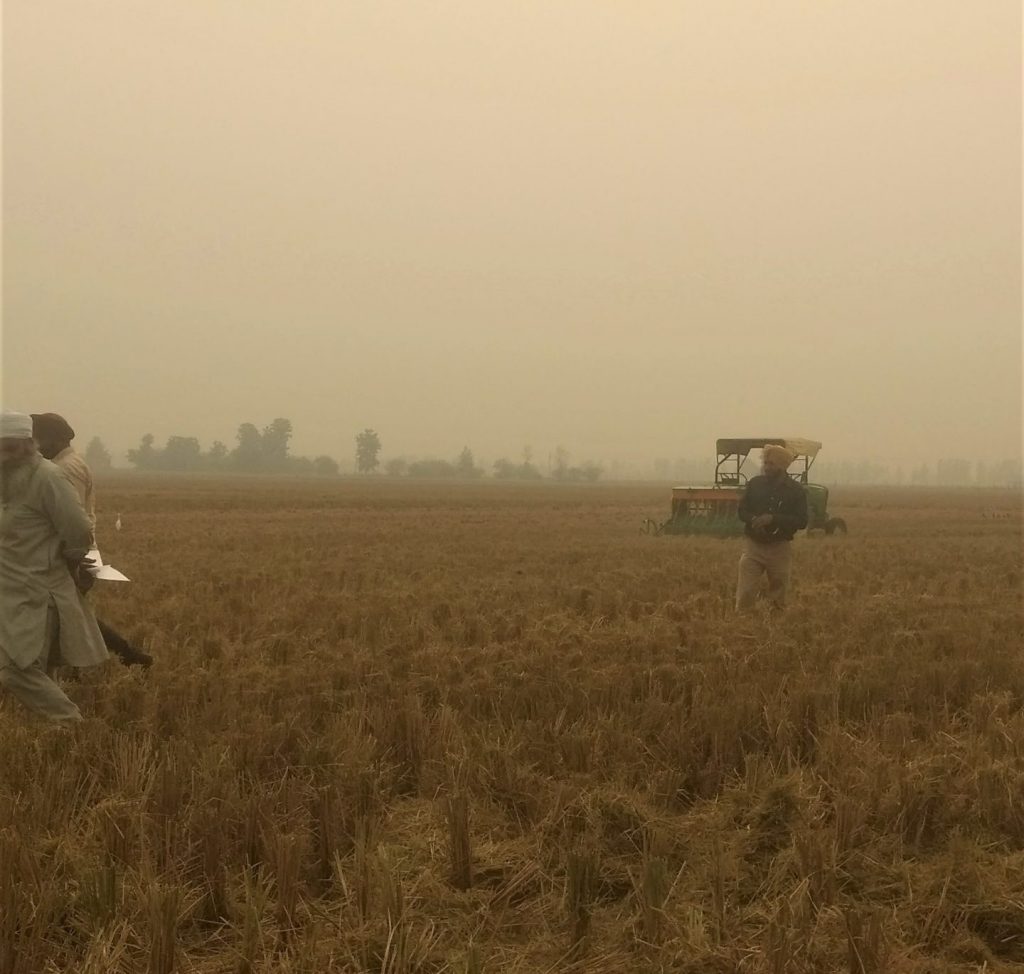Adoption of conservation agriculture in India

Every October to November, the ambient air in the Indo-Gangetic plain becomes a noxious concoction of toxic emissions that are partly attributable to the seasonal agricultural residue burning.
This burning contributes to a persistent and choking blanket of smog that covers the region at the onset of winter. According to recent estimates, farmers in the northern Indian state, Punjab, burn about 19 metric tons of paddy residue. Despite a national ban on agricultural residue burning, farmers in northern India continue to dispose of crop waste through open-field burning. One of the alternatives to open-field burning is the use of technologies such as the `Happy Seeder’.
This research will focus on a subset of issues related to how farmers learn, including network effects; the economics of alternate field preparation and cropping strategies; and, farmers’ decisions to adopt strategies that reduce the need to burn residue. More specifically, the objectives of this study are:
1. To understand the barriers and opportunities to Happy Seeder adoption, and
2. To study the effects of demonstration and training on adoption.
The study will use the survey data collected by TNC in partnership with the Indian Statistical Institute, BISA and CYMMIT in 52 villages in Punjab, India to provide useful insights about the pathways that influence the Happy Seeder adoption decision and help in designing effective future training and demonstration programs. This project aims to: a) to inform policy decisions; and, b) identify and scale up interventions. The results of this research will contribute directly to strategies to reduce air pollution by supporting conservation agriculture in the Indo-Gangetic plains.
Publication: Fields on fire: Alternatives to crop residue burning in India
Team Members: P. P. Krishnapriya, Subhrendu K. Pattanayak, Priya Shyamsundar, E. Somanathan, Alwin Keil, M.L. Jat and H.S. Sidhu
Partners: The Nature Conservancy
